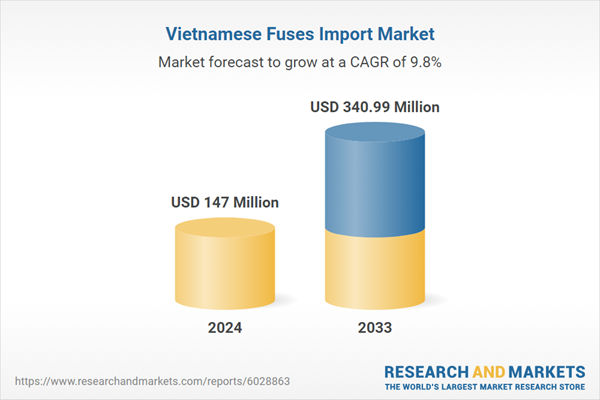Fuses are essential in a range of applications, including consumer electronics, automotive, industrial machinery, household appliances, and power systems. In modern electronics such as smartphones, computers, and TVs, fuses prevent breakdowns caused by power faults or component malfunctions. In vehicles, fuses protect key systems like batteries, lights, and audio equipment, ensuring safe operation. Within industrial applications, fuses safeguard large machinery and control systems from unexpected currents, preventing equipment damage and downtime. Power systems, such as substations and distribution cabinets, also rely on fuses to ensure safe grid operations.
The upstream industry for fuse manufacturing involves supplying materials like copper, tin, and glass, and includes necessary production equipment and techniques such as packaging, testing, laser cutting, and automation lines. The downstream industries encompass electronics, automotive, and appliance manufacturers that depend on fuses to ensure their products' safety and reliability.
Global demand for fuses is rising steadily, driven by continuous growth in consumer electronics and automotive sectors. Notable manufacturers include Littelfuse, Vishay, and the ETI Group.
In recent years, Vietnam's electronics and appliance assembly industries have grown significantly, establishing Vietnam as a global manufacturing and assembly hub. The publisher indicates the fuse market in Vietnam is expanding, especially in the electronics and electrical equipment sectors where fuses are essential. However, due to the technical and equipment requirements for fuse manufacturing, Vietnam has limited production capacity and heavily relies on imports.
According to the publisher's data, Vietnam imported approximately USD 128 million worth of fuses in 2023, with low-voltage fuses accounting for around USD 120 million and medium- to high-voltage fuses at USD 8 million. From January to August 2024, Vietnam's fuse imports reached about USD 100 million, with low-voltage fuses at USD 90 million (a 14% increase compared to 2023), and medium- to high-voltage fuses exceeding the total for 2023. The Vietnamese fuse market is expanding rapidly, with expectations of sustained growth over the next few years.
Vietnam's main fuse import sources from 2021 to 2024 include South Korea, Japan, and China. Leading companies exporting fuses to Vietnam are Sumitomo Wiring Systems, Yura Corporation, and Cloud Network Technology Singapore. Key importers in Vietnam are primarily manufacturers and distributors in the mechanical and electronics manufacturing industries, such as Sumi Vietnam Wiring Systems, Sumidenso Vietnam, and Yazaki EDS Vietnam.
Overall, with Vietnam's economic development, accelerated industrialization, and expanding manufacturing sector, the fuse market in Vietnam is expected to grow continually, and import volumes are anticipated to increase accordingly.
Topics covered:
- The Import and Export of Fuses in Vietnam (2021-2024)
- Total Import Volume and Percentage Change of Fuses in Vietnam (2021-2024)
- Total Import Value and Percentage Change of Fuses in Vietnam (2021-2024)
- Total Import Volume and Percentage Change of Fuses in Vietnam (2024)
- Total Import Value and Percentage Change of Fuses in Vietnam (2024)
- Average Import Price of Fuses in Vietnam (2021-2024)
- Top 10 Sources of Fuses Imports in Vietnam and Their Supply Volume
- Top 10 Suppliers in the Import Market of Fuses in Vietnam and Their Supply Volume
- Top 10 Importers of Fuses in Vietnam and Their Import Volume
- How to Find Distributors and End Users of Fuses in Vietnam
- How Foreign Enterprises Enter the Fuses Market of Vietnam
- Forecast for the Import of Fuses in Vietnam (2024-2033)
Table of Contents
Companies Mentioned
- SUMITOMO WIRING SYSTEMS
- YURA CORPORATION
- CLOUD NETWORK TECHNOLOGY SINGAPORE
- SUMI VIETNAM WIRING SYSTEMS
- SUMIDENSO VIETNAM
- YAZAKI EDS VIETNAM
Methodology
Background research defines the range of products and industries, which proposes the key points of the research. Proper classification will help clients understand the industry and products in the report.
Secondhand material research is a necessary way to push the project into fast progress. The analyst always chooses the data source carefully. Most secondhand data they quote is sourced from an authority in a specific industry or public data source from governments, industrial associations, etc. For some new or niche fields, they also "double-check" data sources and logics before they show them to clients.
Primary research is the key to solve questions, which largely influence the research outputs. The analyst may use methods like mathematics, logical reasoning, scenario thinking, to confirm key data and make the data credible.
The data model is an important analysis method. Calculating through data models with different factors weights can guarantee the outputs objective.
The analyst optimizes the following methods and steps in executing research projects and also forms many special information gathering and processing methods.
1. Analyze the life cycle of the industry to understand the development phase and space.
2. Grasp the key indexes evaluating the market to position clients in the market and formulate development plans
3. Economic, political, social and cultural factors
4. Competitors like a mirror that reflects the overall market and also market differences.
5. Inside and outside the industry, upstream and downstream of the industry chain, show inner competitions
6. Proper estimation of the future is good guidance for strategic planning.

LOADING...
Table Information
| Report Attribute | Details |
|---|---|
| No. of Pages | 80 |
| Published | November 2024 |
| Forecast Period | 2024 - 2033 |
| Estimated Market Value ( USD | $ 147 Million |
| Forecasted Market Value ( USD | $ 340.99 Million |
| Compound Annual Growth Rate | 9.8% |
| Regions Covered | Vietnam |
| No. of Companies Mentioned | 6 |









